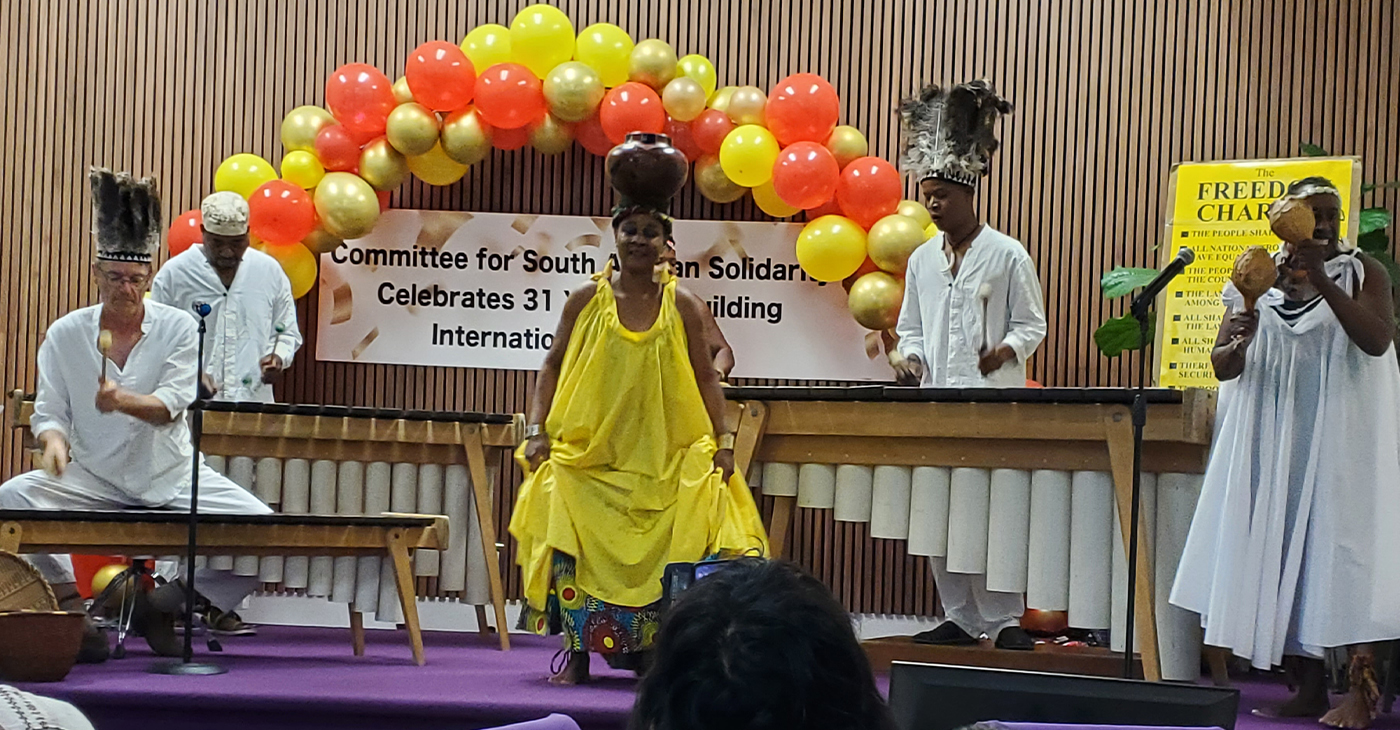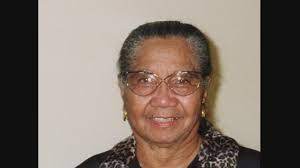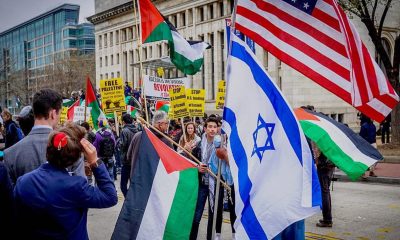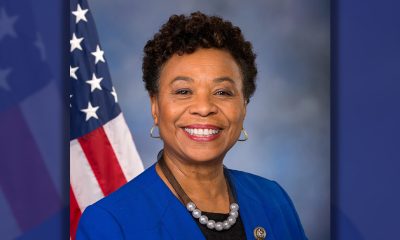World
Despondent Gazans Return to Destroyed Homes

A Palestinian girl walks next to destroyed houses, in the Shijaiyah neighborhood of Gaza City, Monday, March 30, 2015. Despondent over the slow pace of post-war reconstruction, displaced Gazans have begun to return to their damaged homes, patching up the structures with blankets and plastic sheets and living in the unstable and unsafe structures while they wait for promised aid to arrive. (AP Photo/Khalil Hamra)
FARES AKRAM, Associated Press
GAZA CITY, Gaza Strip (AP) — Despondent over the slow pace of post-war reconstruction, displaced Gazans have begun to return to their damaged homes, patching up the structures with cinder blocks and plastic sheets and living in the unstable and unsafe buildings while they wait for promised aid to arrive.
The returns reflect a failure by local authorities and the international community to rebuild Gaza after a devastating war between Israel and Hamas militants last summer. Officials say most of the more than $5 billion of international aid that was pledged never materialized, and returning residents say that small subsidies they received — and their patience — have run out.
“We have lost hope. There is no hope and nobody is interesting in helping us,” said Mohammed Afana, a 27-year-old resident of Shaaf, a neighborhood in eastern Gaza City.
An estimated 18,000 homes throughout Gaza were destroyed during the 50-day war, displacing 110,000 people, according to the United Nations. Less than 10,000 people are still living in U.N. schools that have been turned into shelters.
Shaaf, located close to the Israeli border, was among the hardest hit districts. Israeli ground forces took up positions on the eastern edges of the neighborhood, and Hamas said that its fighters engaged Israeli forces in the area.
An alley off the main street leads to a neighborhood of battered homes. In the middle of the neighborhood lie the remains of the four-story building where Afana and his extended family once lived.
After the war, the United Nations gave families small subsidies to rent apartments elsewhere in Gaza while their homes could be repaired. Afana received $1,300 — enough cash to support his family for three months. He then moved into a crowded home with his wife’s family.
Weeks ago, he decided to return to the damaged first floor of his original home with his wife, two children, parents and a sister. The top two floors of the building are destroyed, and chunks of concrete and twisted metal bars dangle down. Most of the exterior walls on the ground and first floors are destroyed.
Although the house is unsuitable for living, the Afanas rebuilt some exterior walls with secondhand cinderblock. The rest are covered with huge blankets or plastic sheets.
“We can’t find something better. I wish we can find an apartment with a rental subsidy. We would move immediately if we found one,” Afana said, standing in front of a makeshift wall make from different-colored bricks.
Inside the home, the kitchen has been turned into a bedroom, since it still has a wall. Openings in the remaining walls are covered by wooden boards. There are no windows and the floor tile is pocked and uneven.
“Every day, every week, the wind rips off the sheets. That’s how we live,” he said. “Death is more honorable than this life.”
One of five brothers from a family of builders and construction workers, Afana said he could rebuild the home in two weeks if cement and money were available.
In all, hundreds of neighborhood residents, including his brother’s family living upstairs, have returned to their bombed-out homes.
Such scenes are a far cry from what was envisioned when world donors pledged $5.4 billion to rebuild Gaza in October, just weeks after the fighting had ended.
Frode Mauring, the U.N. Development Programme’s special representative, said he believes only 5 to 10 percent of the pledges have been delivered.
“This is a huge concern,” he said in an interview with The Associated Press. “It’s a shame that not everybody has been helped.”
There are many sources of blame. Donors have not followed through on pledges. Israel has been slow in allowing construction materials into Gaza, though in recent months, it has worked with the U.N. to set up a mechanism to allow larger quantities to enter.
But more than anything, an ongoing battle between Hamas and the rival Palestinian Authority appears to have paralyzed reconstruction efforts.
Hamas seized Gaza from Palestinian President Mahmoud Abbas’ forces in 2007, and despite a reconciliation deal last year, Hamas remains firmly in control. Abbas’ Western-backed Palestinian Authority, which governs in the West Bank, has demanded a foothold in Gaza, saying only it can ensure reconstruction proceeds properly.
Since December, only 150,000 tons of rubble was cleared from east Gaza City — less than 10 percent of an estimated 2 million tons that need to be removed, according to Mauring.
Mauring said the U.N. had hoped to provide rental subsidies for two years. “The fact that from time to time there has not been enough money is very regrettable,” he said.
Israel launched the military operation last July in response to heavy rocket fire from Gaza by Palestinian militants.
More than 2,100 Palestinians, including hundreds of civilians, were killed in the fighting, while 72 people died on the Israeli side. Israel has blamed Hamas for the heavy civilian death toll and damage to residential areas, pointing to the group’s use of crowded neighborhoods for cover while firing rockets.
About a dozen families received some relief in temporary trailer caravans donated by Jordan and Oman. In Shaaf, some trailers have now been placed inside of gutted homes.
The wealthy Gulf state of Qatar is also giving people a glimmer of hope. Qatar, the largest single contributor at Gaza’s rebuilding conference with $1 billion pledged, reached an agreement with Israel to deliver construction materials for Qatari-funded projects.
Israel recently began allowing 1,000 tons of cement into Gaza each day for the Qatari projects. Qatar said it will rebuild 1,000 housing units and announced that three families were given $10,000 stipends to kick off the reconstruction.
The three beneficiaries were brothers from the Abu Jamea family, which lost 24 members in an Israeli airstrike that destroyed their apartment building in July.
Since then, Bassam Abu Jamea, whose pregnant wife and three children were among the dead, has been living in a rental home not far from the rubble.
On a recent morning, Abu Jamea woke up to the sound of officials visiting the site. Among them was a Qatari official who told him he had been selected for the project.
“It goes without saying. Our lives have begun to be happy again, because we will have a new home again,” he said.
Copyright 2015 The Associated Press. All rights reserved. This material may not be published, broadcast, rewritten or redistributed.
Activism
South African Solidarity Committee Hosts 31st Annual Celebration
“We’re all together for each other celebrating 31 years of building international solidarity between the people of the United States and South Africa toward the implementation of the 1955 Freedom Charter and 2030 Sustainable Development Goals,” said COSAS Operations Manager Nicole Richards.Located in Berkeley, COSAS is dedicated to the continuing struggle by the people of South Africa’s need for independence.

By Carla Thomas
The Committee of South African Solidarity (COSAS) celebrated its 31st anniversary on Saturday, Oct. 26 at the East Bay Church of Religious Science in Oakland.
Themed “Ubuntu,” a word in Zulu and Xhosa, which means “I am because we are,” the event brought together supporters and community members.
“We’re all together for each other celebrating 31 years of building international solidarity between the people of the United States and South Africa toward the implementation of the 1955 Freedom Charter and 2030 Sustainable Development Goals,” said COSAS Operations Manager Nicole Richards.
Located in Berkeley, COSAS is dedicated to the continuing struggle by the people of South Africa’s need for independence.
A soulful meal was prepared by Chef Rene Johnson and Blackberry Soul Catering along with live entertainment and speakers.
COSAS is an all-volunteer, private membership organization, made up of South Africans, Africans, students, professionals, clergy and others committed to building solidarity between the working people of the U.S. and the South African people still struggling for economic and political freedom.
Formed in 1993, the organization promotes the “real nature” of the changes and struggles taking place in South Africa and the African continent, according to Richards.
“COSAS counters ‘disinformation’ and ‘misinformation’ in the U.S. and Western mainstream media that creates division and distrust,” Richards said. “We produce the South African Beacon and organize and transport solidarity shipments of school supplies to South African grade schools requesting assistance,” Richards said.
According to organizers, COSAS is completely run by volunteers, free from the corporate and government agendas that continue to keep South Africa dependent on the West.
“We rely on the support of concerned individuals. Call us today about how you can get involved by sorting and packing supplies, donating office equipment, and supporting special events,” said Richards.
Earlier in the year, COSAS hosted its World Affairs film showing at Downs Memorial United Methodist Church. The screening featured a short film, “Feeding a Crisis: Africa’s Manufactured Hunger Pandemic,” exploring the hunger challenges African countries face and approaches to resolving the issues.
Contact the Committee for South African Solidarity, 1837 Alcatraz Ave., Berkeley, CA, 510-251-0998 for volunteer opportunities and event information.
Community
How Mobihealth Drives a Telemedicine Revolution in Africa
As a child growing up in northern Nigeria, Dr. Funmi Adewara experienced a severe hand injury that required multiple surgeries and frequent hospital visits. These visits exposed her to the harsh realities of the country’s healthcare system. “I remember sitting in overcrowded waiting rooms, watching doctors stretched thin, unable to meet the needs of so many patients,” Adewara recalls. This formative experience ignited her passion for transforming healthcare in Africa.

By Ifeanyi Abraham
CNN
As a child growing up in northern Nigeria, Dr. Funmi Adewara experienced a severe hand injury that required multiple surgeries and frequent hospital visits.
These visits exposed her to the harsh realities of the country’s healthcare system. “I remember sitting in overcrowded waiting rooms, watching doctors stretched thin, unable to meet the needs of so many patients,” Adewara recalls.
This formative experience ignited her passion for transforming healthcare in Africa.
Growing up with a mother who worked as a nurse, Adewara’s understanding of healthcare challenges deepened through her mother’s stories.
“I knew early on that healthcare wasn’t a privilege — it was a necessity, and I wanted to be part of changing the system,” she explains.
After training as a physician, Adewara worked for 15 years in the United Kingdom’s National Health Service before founding the telemedicine platform Mobihealth in 2017.
Since its launch, Mobihealth has impacted thousands of lives, connecting patients with doctors and healthcare professionals across Nigeria and beyond.
The platform has 20 integrated telehealth clinics that offer remote consultations, diagnostics, and access to specialist care via digital health tools. Located primarily in Nigeria, these clinics are accessible to patients through various subscription plans and are often financed through partnerships with global donor organizations and private donors.
In addition to the clinics, Mobihealth has partnerships with over 200 hospitals, labs, and pharmacies, Adewara says.
The company has earned global recognition, including a $1 million grant from the U.S. Trade and Development Agency in 2022. Adewara was also one of the World Bank’s seven 2020 Sustainable Development Goals & Her award winners, selected from over 2,400 entries worldwide.
Connecting Rural Patients
Across sub-Saharan Africa, millions struggle to access basic healthcare. According to the World Health Organization, the region bears 25% of the global disease burden but has only 3% of the world’s healthcare workers.
“In rural Africa, a trip to the nearest hospital can mean the difference between life and death,” says Adewara.
Mobihealth’s latest initiative offers healthcare for $1 a month for rural and underserved populations. It allows Africans in the diaspora — and global supporters — to sponsor essential services like doctor consultations, diagnostic tests, and access to telemedicine clinics.
The scheme is not solely based on donations; individuals can also subscribe to the service for themselves.
“Healthcare systems across Africa are under immense pressure,” Adewara explains. “Our initiative is a direct response, using technology to connect rural patients with doctors thousands of miles away.”
For Adewara, Mobihealth’s telemedicine platform is not a temporary fix; it represents the future of healthcare in Africa.
“This is about creating a resilient, sustainable and inclusive system, where people, no matter where they are, can access the care they need,” she says.
“Telemedicine brings doctors to people, wherever they may be. By integrating AI and remote monitoring, we are improving the speed and accuracy of care, saving lives in the process,” she adds.
A number of African companies provide telemedicine services, but researchers have pointed out that there are obstacles that could hinder the growth of telemedicine in the continent.
Rural areas can have an unreliable electricity supply and poor internet connectivity, and there is often a lack of government policies and funding around virtual healthcare.
“A Healthcare System for the Future”
Adewara envisions scaling her company’s model to reach millions more across Africa, particularly in countries like Ghana, Kenya, and Ivory Coast.
“Our work is just beginning,” she says. “We are building a healthcare system for the future — one that is resilient, inclusive and capable of meeting Africa’s growing population’s needs.”
However, partnerships are crucial to achieving this vision. “We can’t do this alone. Our collaborations with the African diaspora, hospitals, governments, and international organizations allow us to reach more people and ensure that healthcare is affordable, efficient and accessible,” Adewara adds.
Activism
Atty General Rob Bonta Joins Coalition Backing Pres. Biden’s Migrant Parole Program
“The Biden Administration’s CHNV Parole Program provides a safe pathway to apply for protection for Cuban, Haitian, Nicaraguan, or Venezuelan migrants fleeing violence and upheaval. We urge the court to uphold this program that creates orderly processes for people fleeing humanitarian crises to lawfully reach the United States,” said California Attorney General Rob Bonta. The federal government has exercised its authority under the Immigration and Nationality Act to parole migrants into the country for humanitarian purposes since the Eisenhower Administration.

By Bo Tefu, California Black Media
Attorney General Rob Bonta joined a multistate coalition of 18 attorneys general to write an amicus brief supporting President Joe Bidens’s Parole Program for migrants fleeing violence.
The multistate coalition will submit the brief to the Fifth Circuit Court of Appeals regarding the case Texas v. U.S. Department of Homeland Security. The brief endorses Biden’s Parole Program for Cubans, Haitians, Nicaraguans, and Venezuelans (CHNV Parole Program). The migrant parole program allows individuals from the four countries to apply for advance travel authorization. Migrants can be considered for temporary humanitarian parole of up to two years including employment authorization.
The coalition highlighted California’s interest in maintaining the federal government’s discretionary power granting migrants entry or allowing immigrants to stay on humanitarian grounds.
“In California, we believe that migrants escaping violence should be treated with compassion and dignity, and immigration parole programs are a crucial part of a just and secure immigration system,” said Bonta.
“The Biden Administration’s CHNV Parole Program provides a safe pathway to apply for protection for Cuban, Haitian, Nicaraguan, or Venezuelan migrants fleeing violence and upheaval. We urge the court to uphold this program that creates orderly processes for people fleeing humanitarian crises to lawfully reach the United States,” he said.
The federal government has exercised its authority under the Immigration and Nationality Act to parole migrants into the country for humanitarian purposes since the Eisenhower Administration.
The coalition argued that the lawsuit in Texas threatened to undermine the federal government’s authority to establish crucial programs that help migrants escape unstable circumstances in their home countries.
The coalition stated that parole provides safe, legal, and orderly pathways for people to seek protection in the United States.
However, opponents claim that parole pathways help increase crime and impose costs on states.
-

 Activism4 weeks ago
Activism4 weeks ago‘Jim Crow Was and Remains Real in Alameda County (and) It Is What We Are Challenging and Trying to Fix Every Day,’ Says D.A. Pamela Price
-

 Activism4 weeks ago
Activism4 weeks agoOakland Post: Week of October 30 – November 5, 2024
-

 Alameda County3 weeks ago
Alameda County3 weeks agoD.A. Price Charges Coliseum Flea Market Vendors in Organized Retail Theft Case
-

 Activism4 weeks ago
Activism4 weeks ago‘Criminal Justice Reform Is the Signature Civil Rights Issue of Our Time,’ says D.A. Pamela Price
-

 Activism2 weeks ago
Activism2 weeks agoLIVE! — TOWN HALL ON RACISM AND ITS IMPACT — THURS. 11.14.24 5PM PST
-

 Bay Area3 weeks ago
Bay Area3 weeks agoOakland Mayor Sheng Thao’s Open Letter to Philip Dreyfuss, Recall Election’s Primary Funder
-

 Activism4 weeks ago
Activism4 weeks ago“Two things can be true at once.” An Afro-Latina Voter Weighs in on Identity and Politics
-

 Bay Area3 weeks ago
Bay Area3 weeks agoPoll Shows Strong Support for California’s Controversial Prop 36 Crime Initiative























































